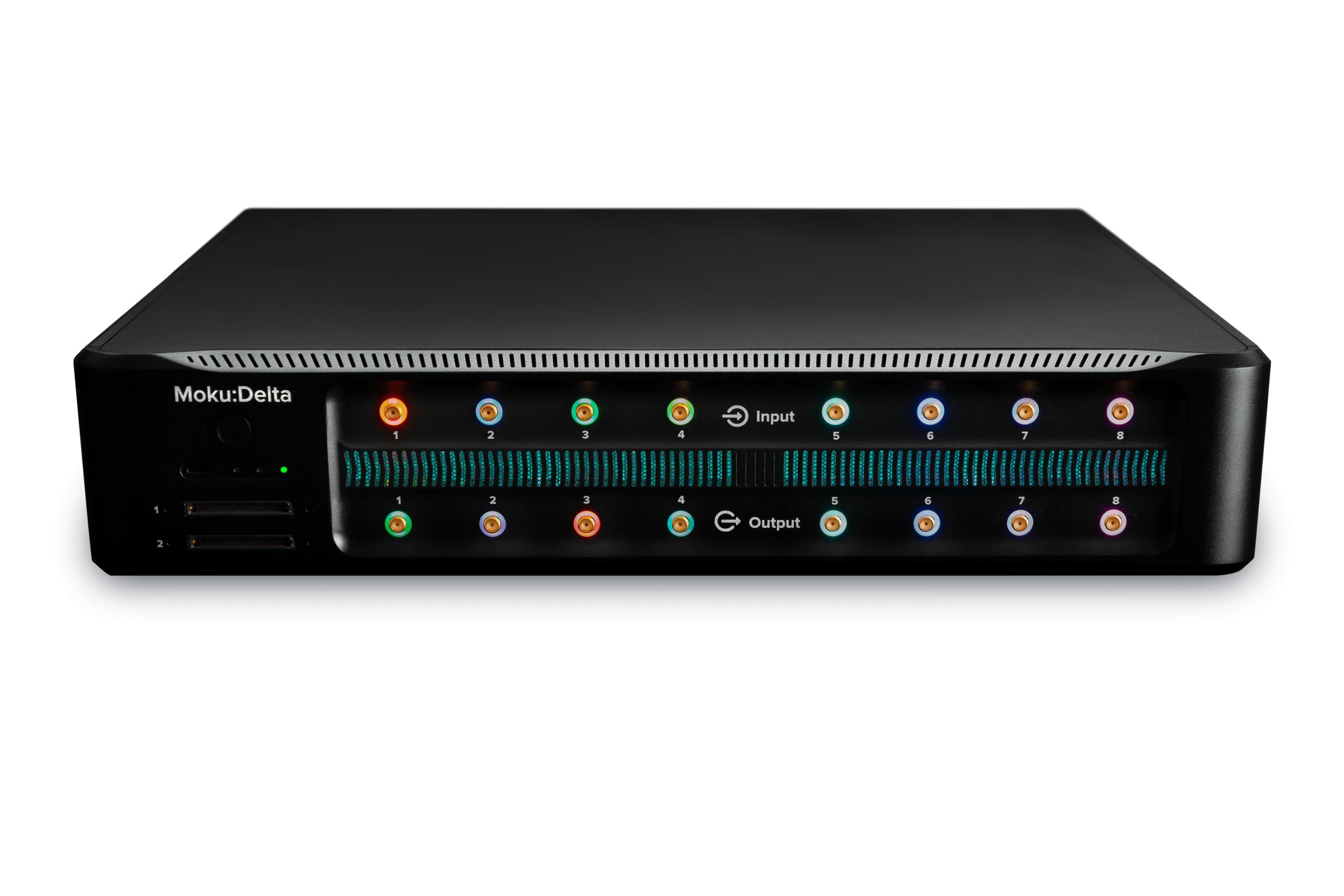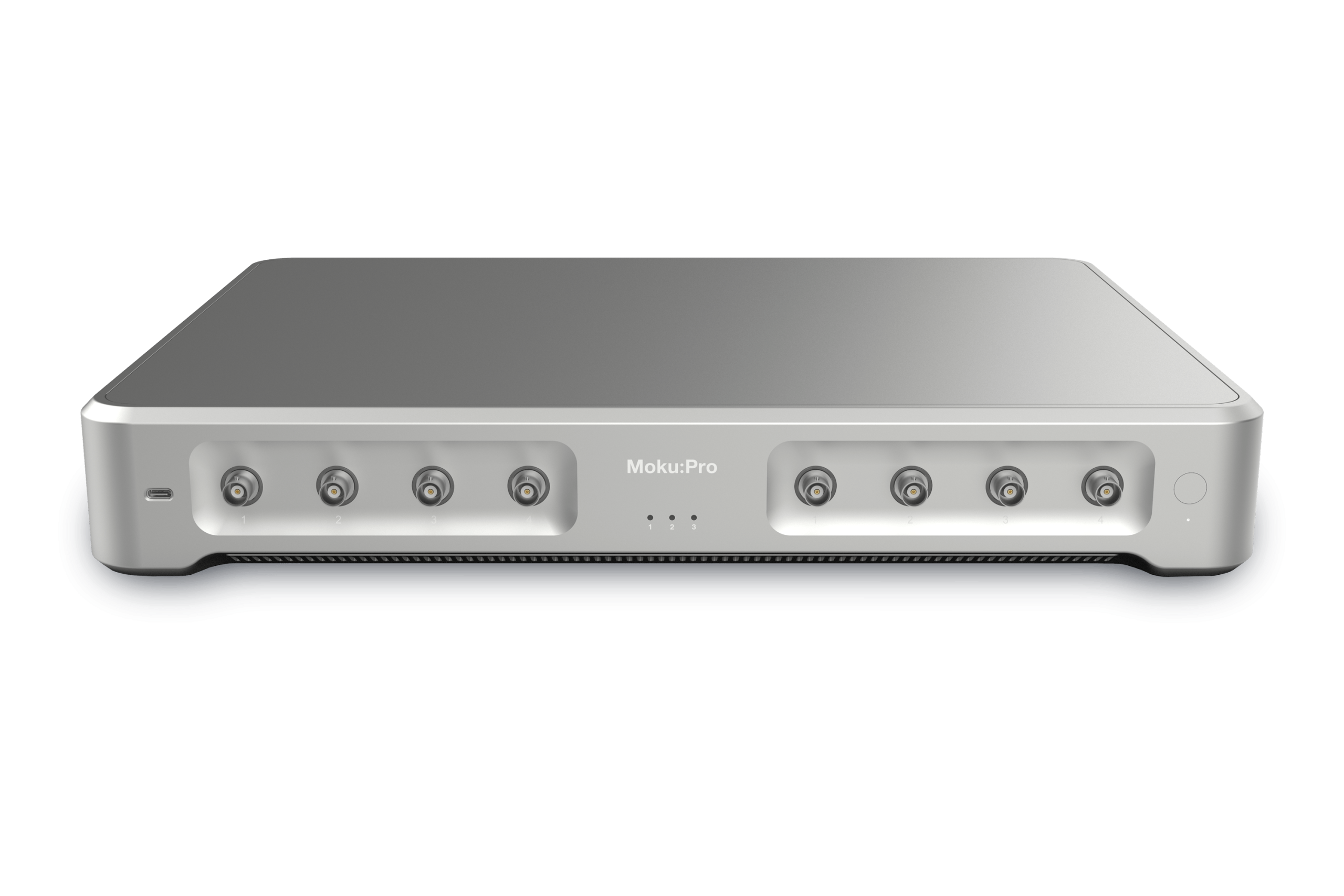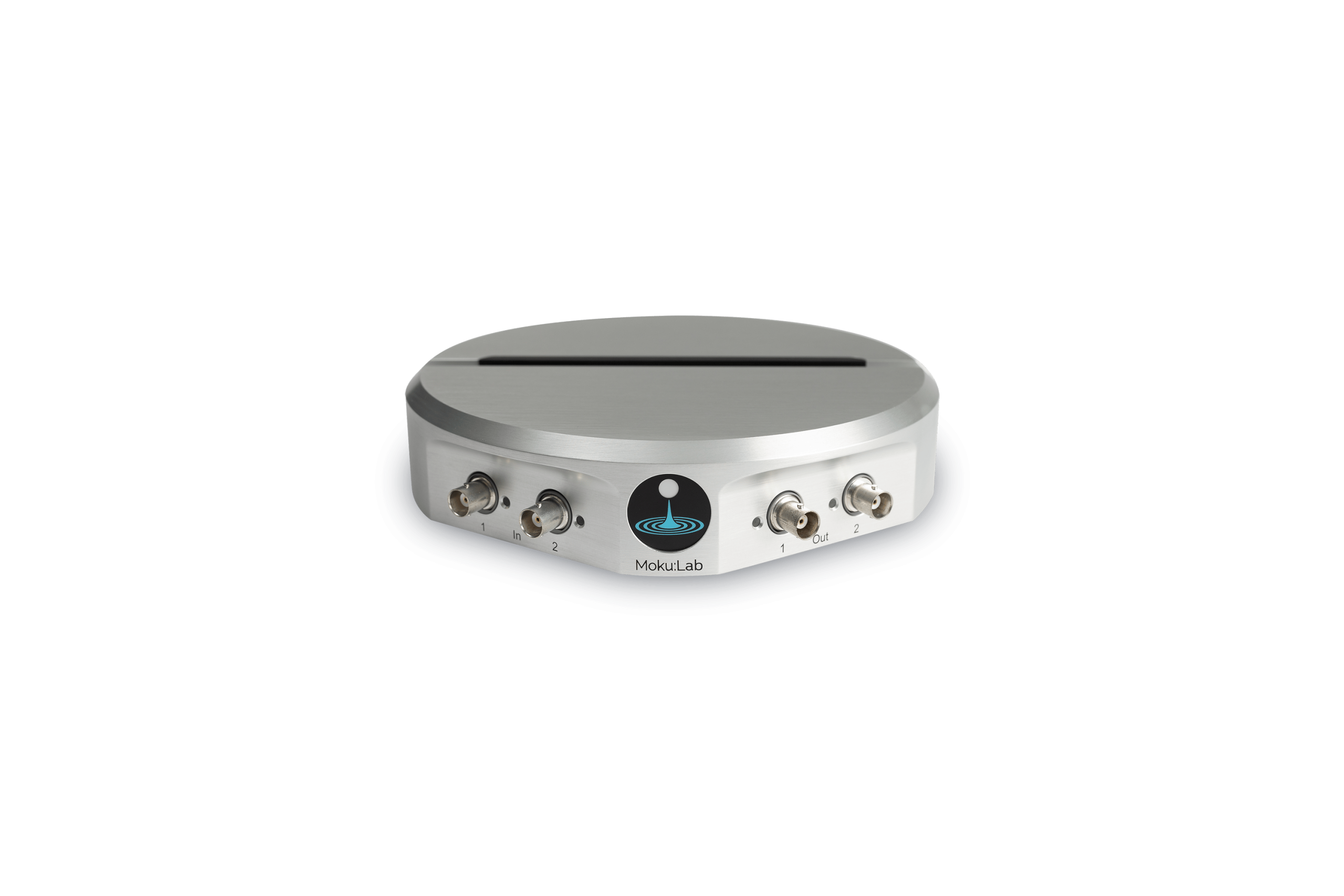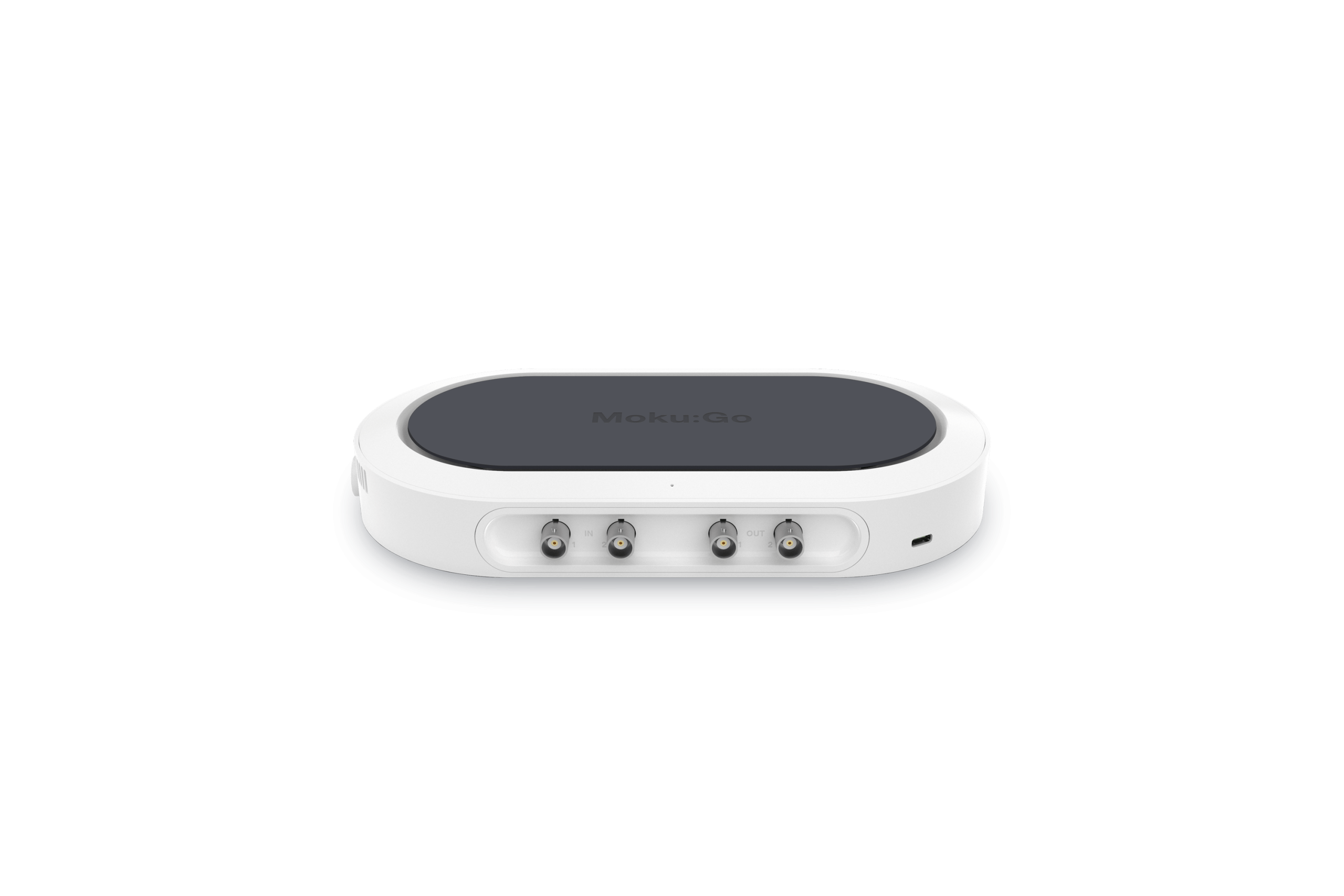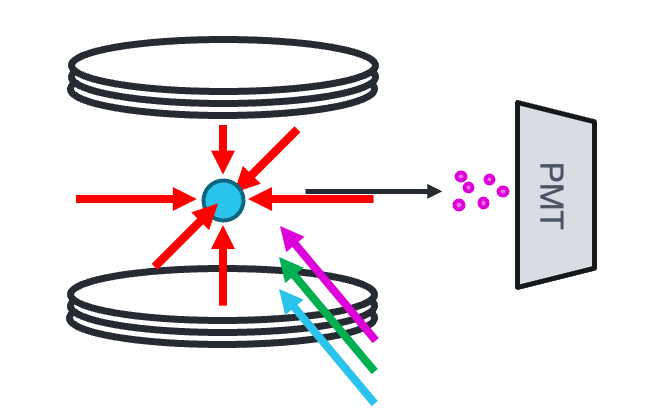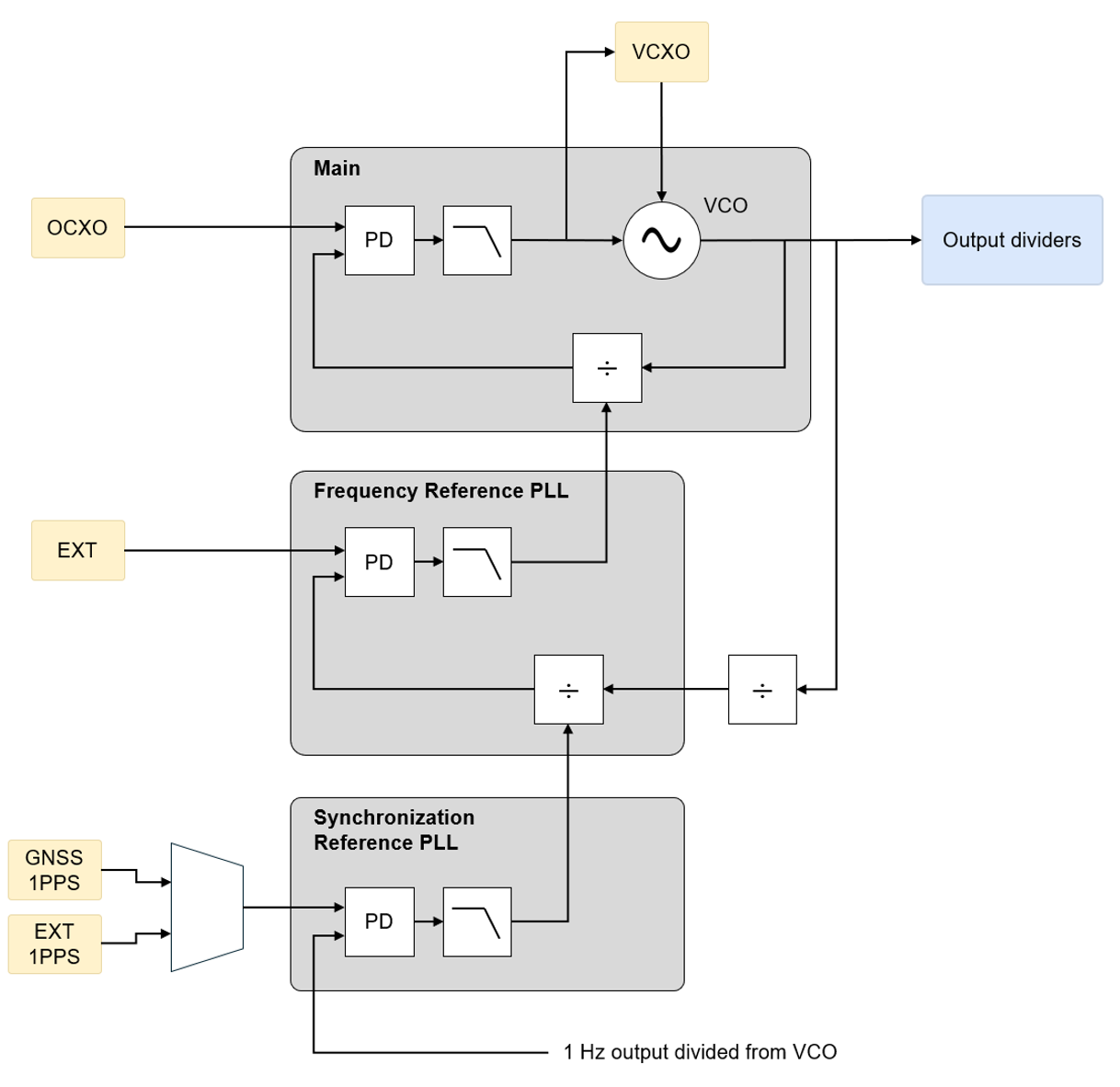Achieving phase coherence across multiple lasers can be challenging and expensive. Moku:Pro’s Phasemeter exceeds the performance of conventional lock-in amplifiers and makes it easier to stabilize, steer, and measure multiple lasers in real-time with unmatched precision.
With exceptional dynamic range, zero dead-time, and measurement precision, the Phasemeter can handle your most challenging phase measurement needs. Able to accommodate evolving research, demanding timelines, and high performance requirements, the Phasemeter is just one of many instruments available on the Moku:Pro, a single platform that brings high-performance software-defined instrumentation to the benchtop.
What is a Phasemeter?

Figure 1: User interface for Moku:Pro’s Phasemeter
Phasemeters are not common commercial instruments. In fact, the one we have developed is quite unique. For reference, consider a conventional frequency counter which measures the number of cycles of oscillation over a certain period. Similarly, the Phasemeter can track frequency and phase, but can do so continuously with exceptional dynamic range, zero dead-time, and automatic phase unwrapping by implementing a digital phase-locked loop.
How does a Phasemeter Work?
As part of the Moku:Pro platform, Liquid Instruments’ Phasemeter provides an optimized solution for applications that require multiple phase-coherent channels such as laser stabilization and steering, directed energy, and optical electronics. Due to Moku:Pro’s 10 MHz synchronization port, multiple Moku:Pros can be easily synchronized to create high channel count systems without compromising phase coherence at a low cost per channel.
Simultaneously and Continuously Measure Phase, Frequency, and Amplitude
Moku:Pro’s Phasemeter is based on a phase-locked loop architecture that tracks and records the phase, frequency, and amplitude of up to four independent signals. The high-precision measurements are taken relative to an onboard reference clock with greater than 300 ppb accuracy, resulting in better than 6 μradian precision from 1 kHz up to 300 MHz. Alternatively, an external reference clock can be used with the 10 MHz synchronization port. Measurements can be taken with zero dead time, and if a signal fades unexpectedly, free-wheeling mode intelligently holds the loop state and automatically re-engages when the signal returns. The phase-locked loop tracking also allows for ultimate flexibility with adjustable tracking bandwidth from 10 Hz (a great option for signals with a low signal-to-noise ratio) to 10 kHz (ideal for signals with large dynamics).
The integrated waveform generator enables users to produce up to four sine waves up to 500 MHz with the option to phase lock the output to their corresponding input signal. This integrated, software-defined instrumentation setup is cost-effective as it removes the need for additional standalone waveform generation equipment.

Integrated Datalogging, Real-Time Visualization, and Analysis
The Phasemeter facilitates rapid data acquisition with its integrated data logger. Users can log data directly to the onboard memory at rates of 30 Hz, 120 Hz, 477 Hz, 1.9 kHz, 15.3 kHz, and 122 kHz and transfer the data via a wireless connection.
The Phasemeter works with a touch-based interface that is intuitive and easy to use yet comprehensive. Out-of-the-box the Phasemeter can be used for real-time visualization and to apply data analysis methods such as power spectral densities, coherence, Rayleigh spectra, or Allan deviations. With these standard features, there is no need for users to perform calculations manually or conduct post processing. Python and MATLAB application programming interfaces (APIs) are also available to develop automated test sequences or take advantage of a multi-instrument setup.
A New Standard in Test Equipment
While the Phasemeter is an optimal instrument for many applications in the Aerospace and Defense space, Moku:Pro also features a Lock-in Amplifier, PID Controller, Frequency Response Analyzer, and more, all of which can be accessed in an instant due to the reconfigurable nature of the hardware. Being able to provide the right tool for today’s job and hosting a suite of high-powered instruments that can be used in the future has made Moku:Pro a leading choice as Aerospace companies look to future-proof their labs.
Have questions or want a printable version?
Please contact us at support@liquidinstruments.com
